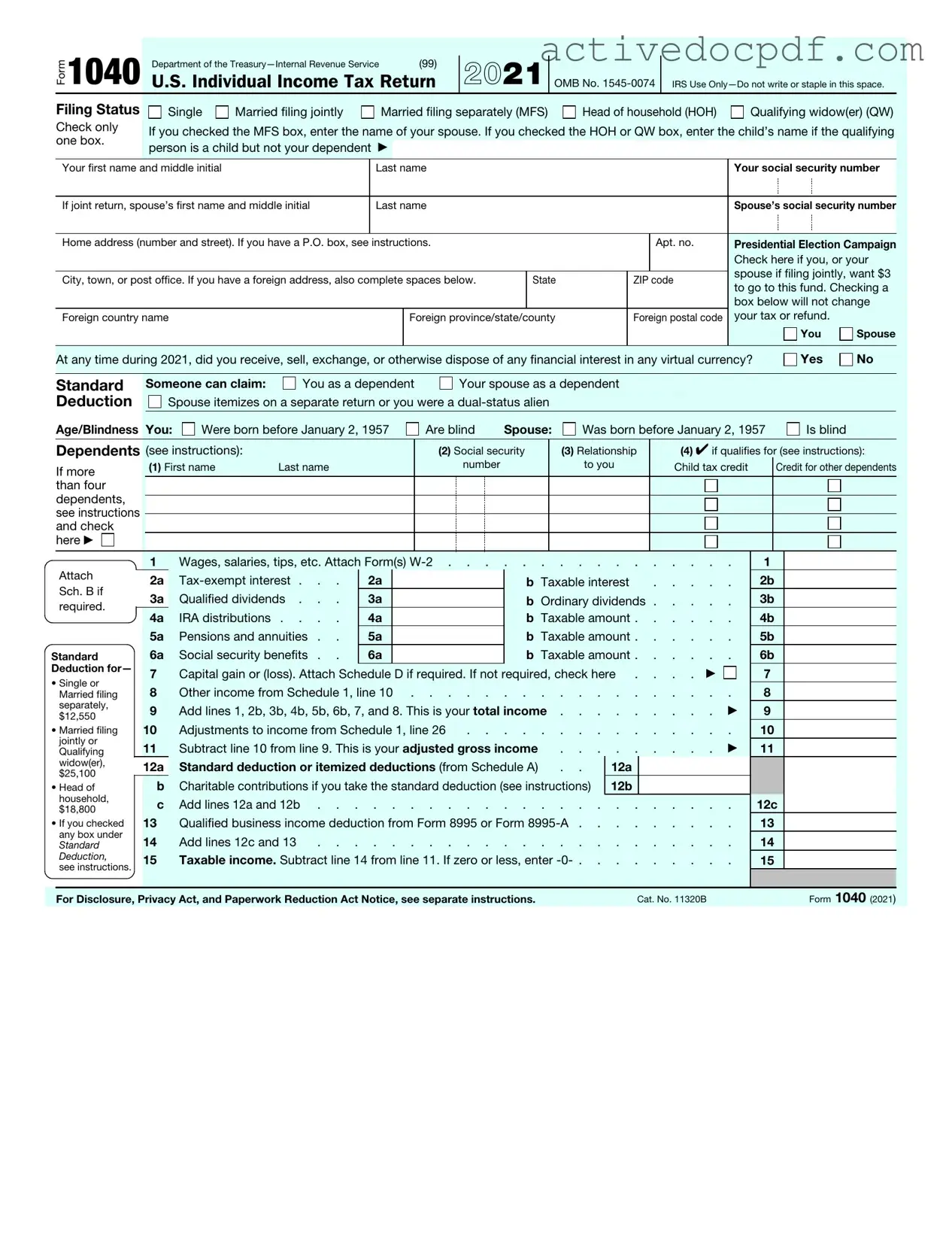The IRS 1040 form is the standard individual income tax return form used by U.S. taxpayers to report their annual income. It allows individuals to calculate their tax liability, claim deductions and credits, and determine whether they owe additional taxes or are entitled to a refund.
Generally, anyone who earns income in the United States must file a 1040 form. This includes:
-
Employees receiving wages or salaries.
-
Self-employed individuals.
-
Individuals receiving unemployment benefits.
-
Those with investment income.
However, specific income thresholds and other factors may affect the requirement to file, so it's important to check the IRS guidelines each tax year.
The IRS offers several variations of the 1040 form to accommodate different taxpayer situations:
-
Form 1040:
The standard form for most taxpayers.
-
Form 1040-SR:
Designed for seniors, featuring larger print and a simpler layout.
-
Form 1040-NR:
For non-resident aliens who need to report U.S. income.
-
Form 1040-X:
Used to amend a previously filed 1040 form.
To fill out the 1040 form, gather the following information:
-
Your Social Security number.
-
Income statements such as W-2s and 1099s.
-
Records of deductible expenses, like mortgage interest and medical expenses.
-
Information about any tax credits you may qualify for.
Having this information on hand will make the process smoother and more accurate.
You can file your 1040 form in several ways:
-
Electronically:
Use tax preparation software or hire a tax professional to e-file.
-
By mail:
Print and complete the form, then send it to the appropriate IRS address based on your state.
Filing electronically is often faster and can help you receive your refund more quickly.
The typical deadline for filing your 1040 form is April 15th of each year. If this date falls on a weekend or holiday, the deadline may be extended to the next business day. You can also request an extension, which gives you until October 15th to file, but remember that any taxes owed are still due by the original deadline.
Yes, if you discover an error after filing, you can amend your 1040 form using Form 1040-X. This form allows you to correct mistakes related to income, deductions, or credits. Be sure to file the amendment as soon as possible to avoid potential penalties or interest on any taxes owed.
What should I do if I can't pay my taxes?
If you're unable to pay the full amount of taxes owed, don't panic. The IRS offers several options, including:
-
Installment agreements:
Set up a payment plan to pay off your tax debt over time.
-
Offer in compromise:
Negotiate a settlement for less than the total amount owed.
It's important to communicate with the IRS and explore these options rather than ignoring the situation.
What happens if I miss the filing deadline?
Missing the filing deadline can lead to penalties and interest on any taxes owed. If you fail to file your return on time, the IRS may impose a failure-to-file penalty. If you owe taxes and do not pay by the deadline, a failure-to-pay penalty may also apply. To minimize consequences, file your return as soon as possible, even if you cannot pay the full amount.
If you need assistance with your 1040 form, consider the following resources:
-
The IRS website offers a wealth of information and resources.
-
Tax preparation software can guide you through the process.
-
Local tax professionals can provide personalized assistance.
Using these resources can help ensure your tax return is accurate and complete.
